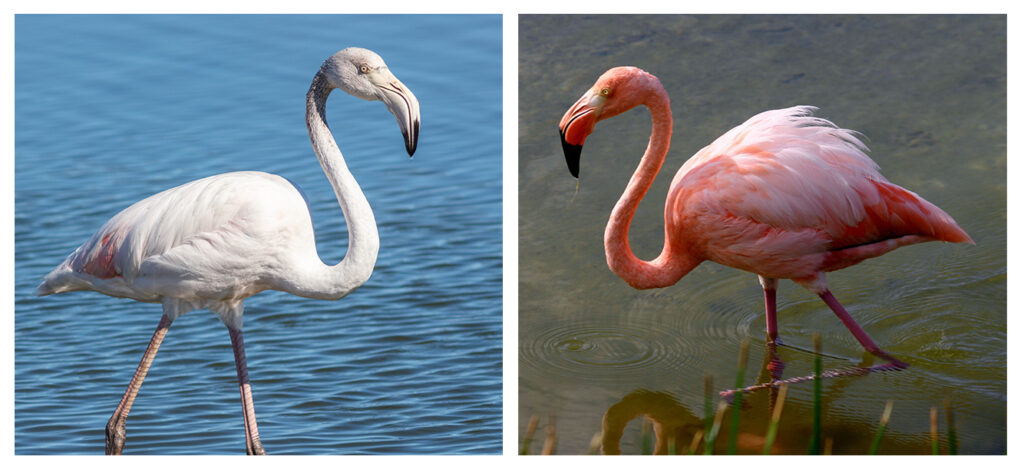El genotipo de un organismo es el conjunto de sus genes. Su fenotipo son todas sus características observables y en ellas influyen tanto su genotipo como el ambiente. Por lo tanto, cuando definimos la evolución, en realidad nos ocupamos de los cambios, de generación en generación, en los genotipos que forman una población. Sin embargo, dado que el genotipo de un organismo por lo general influye en su fenotipo, es de esperar que los fenotipos que forman la población cambien también.
Por ejemplo, las diferencias de genotipo producen distintos fenotipos. Estos gatos domésticos tienen genes diferentes para la forma de las orejas que hacen que uno tenga orejas normales y el otro orejas curvadas en forma de rizo.

Un cambio en el ambiente también puede afectar al fenotipo. Aunque a menudo pensamos que los flamencos son rosas, ser rosas no está codificado en su genotipo y es el alimento que comen lo que hace que su fenotipo sea blanco o rosa.

Learn more about genotype and phenotype in context:
Original translation by the Spanish Society of Evolutionary Biology; translation editing by Maya deVries
